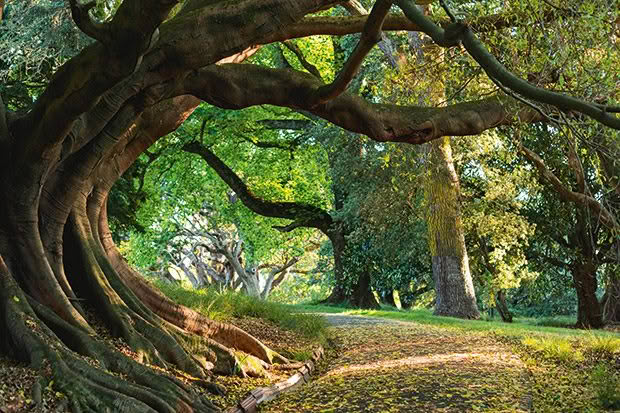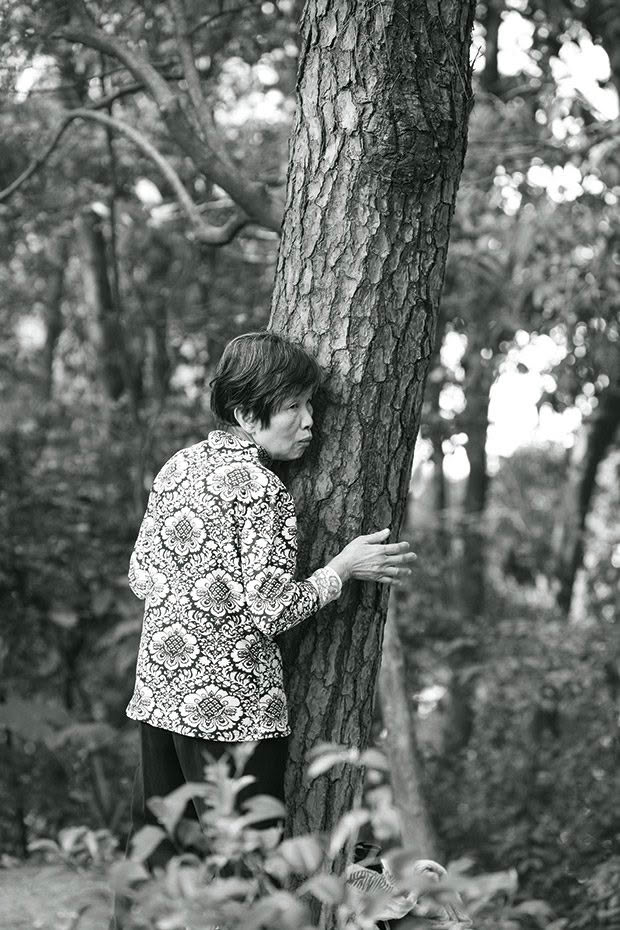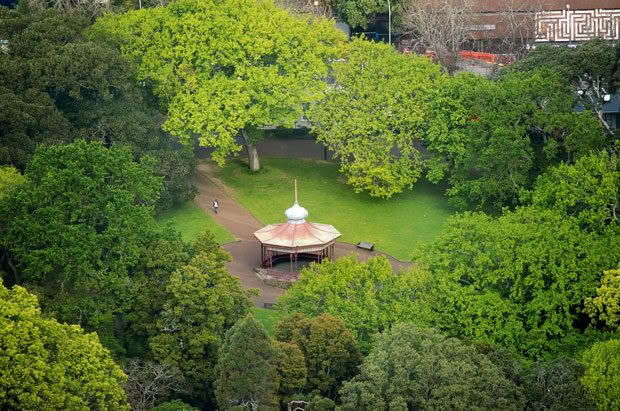A whimsical wander through Albert Park prompts this photographer to ponder amongst the trees

A photographer wanders through Albert Park near his inner-city home, wondering when travels further afield might be allowed, and begins to reflect on connections close at hand.
Words & photos: Chris van Ryn
It’s bathwater warm, and the time of day artists prefer; the golden hour of dusk with dim light reflecting remnants of the sun’s glow. In this mellowness, I clamber over the roots of a moreton bay fig to find a perch.
Moreton bay figs are the park’s bodybuilders. With bulging biceps, they look as though they carry the weight of the world on their sturdy limbs. Perhaps they do. Imposing buttress roots fan out around the trunk base, the outer reaches matching the scale of the crown.
In the dimming light, I conjure up visions of giant wild horses, flanks pulsing with power as they prance around open fields. And as the roots taper, snakes probe for entry to the underworld.
Then, in the lowering light, movement; a rat scuttles along the edges of a root, and, with a speed and agility that amazes me, it scoots up the trunk and disappears, only to reappear as if in some magic trick, to scuttle along a high-reaching branch.
Is this the kind of tree Italo Calvino imagined when he wrote his 1957 novel, The Baron in the Trees? Looking at one of its massive forearms, cantilevering across the path, I can imagine the adventures of a boy who climbs out of his second-storey bedroom window onto such a limb and, navigating from branch to branch and tree to tree, spends the rest of his life inhabiting an arboreal kingdom. At 61, I want to be that kid, the baron in the trees.

Right this minute, I feel the drumbeat of adventure stimulating my pulse and imagination. I want to clamber along the branch that is a bridge to nowhere. To feel the flush on my cheeks, my lungs inflating in small rapid breaths at the promise of adventure, the feeling of being free, of stepping into the unknown, the empowering feeling of knowing I am on my own, and it all comes down to… to me.
It is no surprise I’ve spent my life meandering across the globe. Today, I’d been at the library scanning shelves when I noted a New Scientist magazine cover image of a tree with a crown of branches and a cascade of roots fanning out beneath it.
‘Are trees sentient?’ the coverline queried. And, just like that, my model of the world changed. What? Wait — I thought only animals were sentient? But no. Below us, in the world without light, is a world of awareness. Trees connect and communicate with each other. They have a sense of belonging to trees around them and support trees in need. They recognize offspring and nurture them.
And, with something akin to memory, lessons from past experiences can be transmitted from old trees to young ones. All this happens through the network of their roots, which reach out to each other and, using neurotransmitter chemicals found in human brains, transport information from tree to tree. An internet of roots. Scientist Susan Simard calls it The Wood Wide Web.

The words arrive in my brain like the start of an adventure as I am thrust from one worldview to another, into the realm of all things sentient. I am the baron in the trees, creeping along the forearm of a moreton bay fig with a collection of new thoughts, out on a bridge… to the underworld.
In Albert Park, clusters of silhouettes accumulate. It is now dusk, and I still straddle the root. While the park goes to sleep, below me, tree roots are carrying out complex cognitive functions.
Yesterday, I didn’t know this. Today, I do. An adventure has begun. What else is sentient? There’s a flutter in the branches. A tūī yodels. A pair of rosellas converse in sounds like the beeping of a reversing truck. The horses’ flanks and snakes have dissolved into shadows.
I set off again around the park, leaving behind the figs to stroll past the washingtonia palms and the ombu tree with its hollowed-out interior and pause by the ancient oaks framing the art gallery.
Albert Park has more than 80 tree species from Japan, South Africa, Brazil, India, Chile, Australia, Norfolk Island, the United States, New Zealand, Holland, China, Argentina. That’s an entire United Nations Wood Wide Web of conversation going on under my feet using a universal lexicon, a kind of chemical Esperanto.

In 1990, while in Guangzhou, China, I spent an afternoon meandering around the 38-hectare gardens in Yuexiu Park. Between strands of bamboo, I spied an elderly woman hugging a slender pine. She placed her cheek against the bark and drummed the trunk in a gentle staccato as if sending a message.
In Albert Park, 30 years later, I head to a moreton bay fig. The glow of a park light arcs over the path. I navigate down a bank between grasses and step lightly over roots. Trees do carry the weight of the world on their shoulders. They lower the temperature of the planet. They breathe so we can breathe. They absorb particulate matter, pollutants that kill more people annually than pandemics and wars combined.
They capture, store and transfer the sun’s fusion to us. They are homes for songbirds. They are sentient beings that get cut down for our consumption. They are bridges for barons and limbs for adventurers. They calm nine-to-five minds and heal souls with the scent and foliage of variegated greens and autumn leaves, each singular leaf an artwork.
When I reach the fig, I lean in and press my cheek against the cold and rough bark, and then, lightly drumming the sides of the tree, I tap tap tap a message for The Wood Wide Web. The message is L O V E. I hope it goes viral.
MORE HERE
Love this story? Subscribe now!
 This article first appeared in NZ Life & Leisure Magazine.
This article first appeared in NZ Life & Leisure Magazine.
